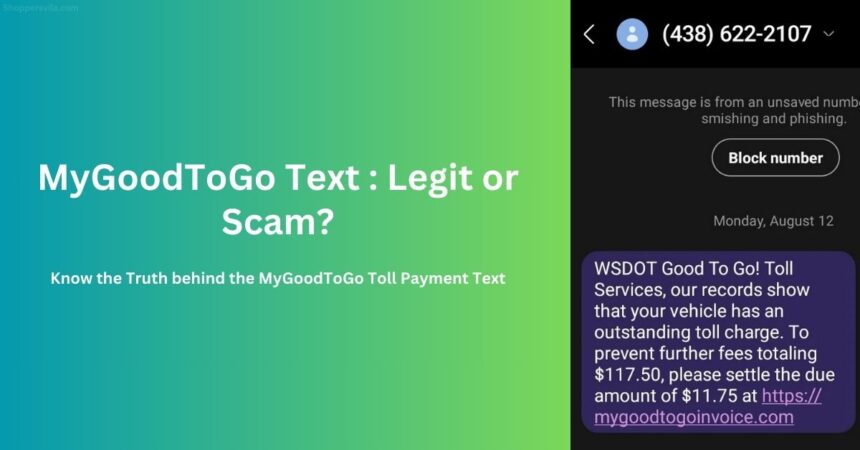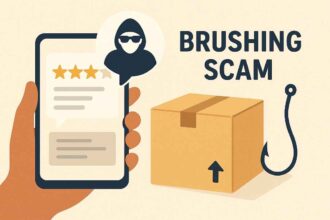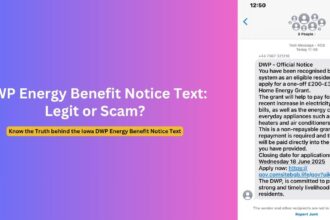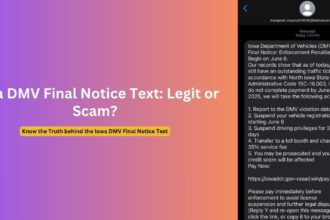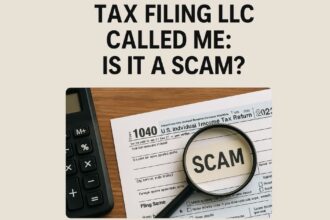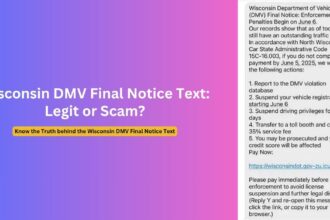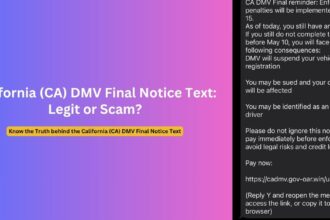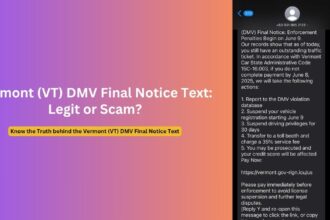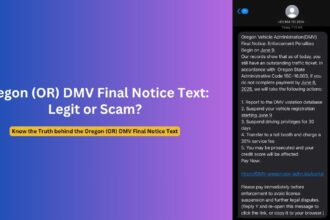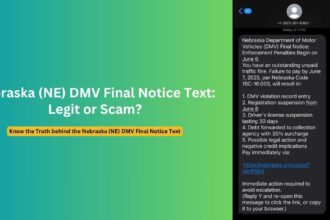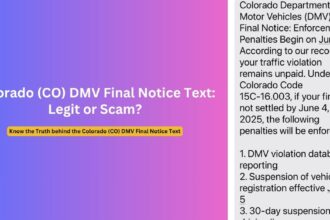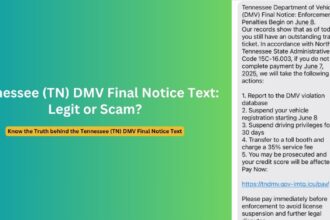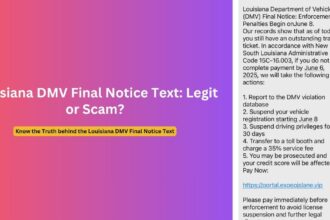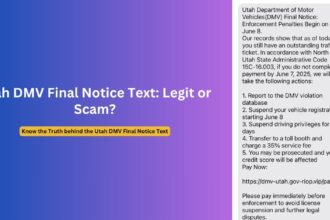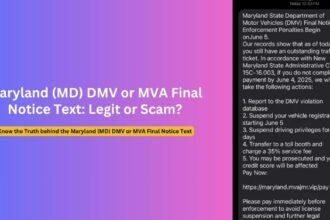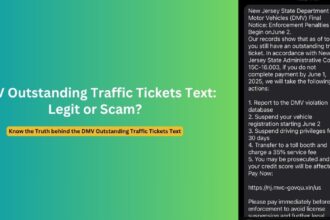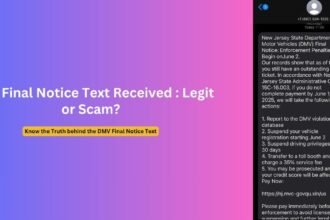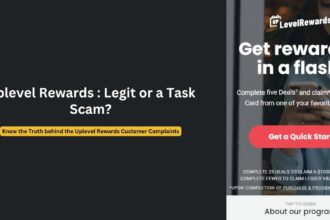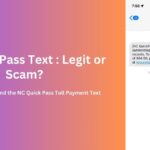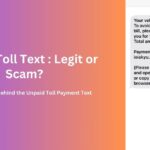As phishing attempts evolve, thousands fall victim to sophisticated GoodToGo impersonators
Thousands of Washington residents and former residents are being targeted in an elaborate phishing scam disguised as toll payment notices from the state’s legitimate “Good To Go!” toll service. The scam, which began circulating in April 2024, has continued to spread and evolve, prompting multiple warnings from the Washington State Department of Transportation (WSDOT).
“These scammers have created surprisingly convincing imitations of our official communications,” says Christopher Foster, communications manager for WSDOT’s toll division. “We want to emphasize that any text message specifying a dollar amount and directing you to a website other than MyGoodToGo.com is fraudulent.”
How the MyGoodToGo Text Scam Works
The fraud begins with an unsolicited text message claiming to be from “WSDOT Good To Go! Toll Services” or similar official-sounding names. The message typically states that the recipient has an outstanding toll charge ranging from $4 to $12 and warns of additional penalties if not paid immediately.
Our records show that your vehicle has an outstanding toll charge. To prevent further fees totaling $117.50, please settle the due amount of $11.75 at [fraudulent URL].
reads one example message.

What makes this scam particularly effective is its timing and targeting. Many victims report receiving these texts shortly after actually crossing toll bridges or roads in Washington, making the messages seem plausible. Others who have moved away from Washington but still maintain phone numbers with Washington area codes are also being targeted.
Once a recipient clicks the link, they’re directed to a convincingly designed website mimicking the official Good To Go! portal. These fake sites request personal information including:
- Driver’s license number
- Date of birth
- Full name and address
- Credit or debit card information
“The scammers have clearly studied our legitimate website and communications,” notes Foster. “They’ve created a very convincing imitation that has unfortunately fooled many drivers.”
Red Flags That Expose the Scam
While increasingly sophisticated, these fraudulent communications still contain several telltale signs that can help drivers identify them as scams:
- Specific dollar amounts in text messages WSDOT has explicitly stated they do not send texts specifying exact dollar amounts like $6.67 or $11.75
- Non-standard web addresses Legitimate communications only direct users to MyGoodToGo.com. Scam sites use variations such as:
- mygoodtogoinvoice.com
- mygoodtogo-toll.com
- wamygoodtogo.com
- wa-toll-mygoodtogo.com
- Requests for date of birth The legitimate Good To Go! service never requests birthdate information when paying tolls
- Messages from non-local area codes Many victims report receiving texts from Canadian phone numbers, particularly those with 438 area codes
- Urgent language and immediate threats Scam messages typically create false urgency with threats of escalating penalties
According to cybersecurity expert Miranda Chen, “These scammers are leveraging both technical sophistication and psychological manipulation. They’re counting on recipients to act quickly out of concern about mounting penalties rather than pausing to verify the message’s authenticity.”
Known Fraudulent MyGoodToGo Websites to Avoid
Based on user reports and WSDOT warnings, the following domains have been identified as fraudulent and should be avoided:
- mygoodtogoinvoice.com
- mygoodtogo-toll.com
- wamygoodtogo.com
- wa-toll-mygoodtogo.com
- mygoodtogo-payment.com
- goodtogo-wa.com
- wadot-payment.com
- wa-goodtogo-toll.com
This list is not exhaustive, as scammers frequently create new domains as existing ones are reported and shut down. The only legitimate website for Good To Go! toll payments is MyGoodToGo.com.
What To Do If You Receive a Suspicious Message
If you receive a text or email claiming to be from Good To Go! about unpaid tolls, WSDOT recommends taking the following steps:
- Do not click any links in the message These links can lead to fraudulent websites designed to steal your information
- Independently verify your account status Visit the official MyGoodToGo.com website directly (by typing the address into your browser, not by following links) or call the official customer service line at 1-866-936-8246
- Report the message
- Forward suspicious emails to your email provider’s spam reporting system
- Report suspicious texts to your mobile carrier (typically by forwarding to 7726)
- File a report with the Federal Trade Commission at ReportFraud.ftc.gov
- Block the sender Most smartphones allow you to block specific numbers from contacting you again
“The most important thing is to verify independently rather than responding to the message directly,” emphasizes Foster. “When in doubt, contact our customer service team through official channels.”
If You’ve Already Fallen Victim
For those who have already clicked links and provided personal information, immediate action is essential to minimize potential damage. Security experts recommend the following steps:
For Financial Information:
- Contact your bank or credit card company immediately Report your card as compromised and request a replacement with a new number
- Monitor your accounts closely Check for unauthorized transactions and set up account alerts for any new activity
- Consider placing a fraud alert or credit freeze Contact major credit bureaus (Equifax, Experian, and TransUnion) to place alerts on your credit file
For Personal Identification:
- File a report with the Department of Licensing fraud department If you provided your driver’s license information, contact [email protected]
- File an identity theft report Visit IdentityTheft.gov to create a recovery plan
- File a police report Some jurisdictions allow online filing through services like mycrimereport.us
“Unfortunately, once personal information has been compromised, there’s no way to ‘unshare’ it,” explains Chen. “The focus needs to be on damage control and preventing fraudsters from using that information.”
Protecting Yourself from Future Good To Go Toll Payment Scams
As this and similar scams continue to evolve, experts recommend several preventative measures:
Verify Communications Through Official Channels
“Good To Go! primarily communicates through mail and email, not text messages,” notes Foster. “Any unexpected communication about your account should be verified through our official website or customer service number.”
Understand Legitimate Payment Processes
WSDOT emphasizes several key points about how legitimate toll collections work:
- Good To Go! typically sends toll bills by mail, not text
- For account holders, toll charges are automatically deducted
- Unpaid tolls first generate a toll bill, then a civil penalty after 80 days
- All legitimate communications direct customers only to MyGoodToGo.com
Practice General Digital Safety
Digital security experts recommend these broader precautions:
- Be skeptical of unsolicited messages, especially those creating urgency
- Verify the sender’s identity through independent channels
- Check URL addresses carefully before entering personal information
- Use unique passwords for different accounts
- Consider using a credit card rather than debit card for online payments
- Keep devices and applications updated with security patches
A Growing Problem Beyond Washington
Washington isn’t the only state experiencing toll-related scams. Similar phishing attempts have been reported targeting users of toll systems in California, Florida, Texas, and other states with extensive toll networks.
“These scams follow a similar pattern nationwide,” explains Chen. “Scammers obtain area code information and target both current and former residents with convincing messages about local services.”
The Federal Trade Commission reports that text message scams increased by 58% in 2023, with financial institutions and government agencies being the most commonly impersonated entities.
WSDOT continues to update its scam alerts as new variants emerge. Drivers are encouraged to report suspicious communications and stay vigilant about protecting their personal information.
“Unfortunately, as we improve security, scammers adapt their tactics,” concludes Foster. “The best defense is an informed and cautious public. When in doubt, go directly to MyGoodToGo.com or call our customer service team.”
For the latest information about Good To Go! toll operations or to report suspicious communications, visit MyGoodToGo.com or call customer service at 1-866-936-8246.
